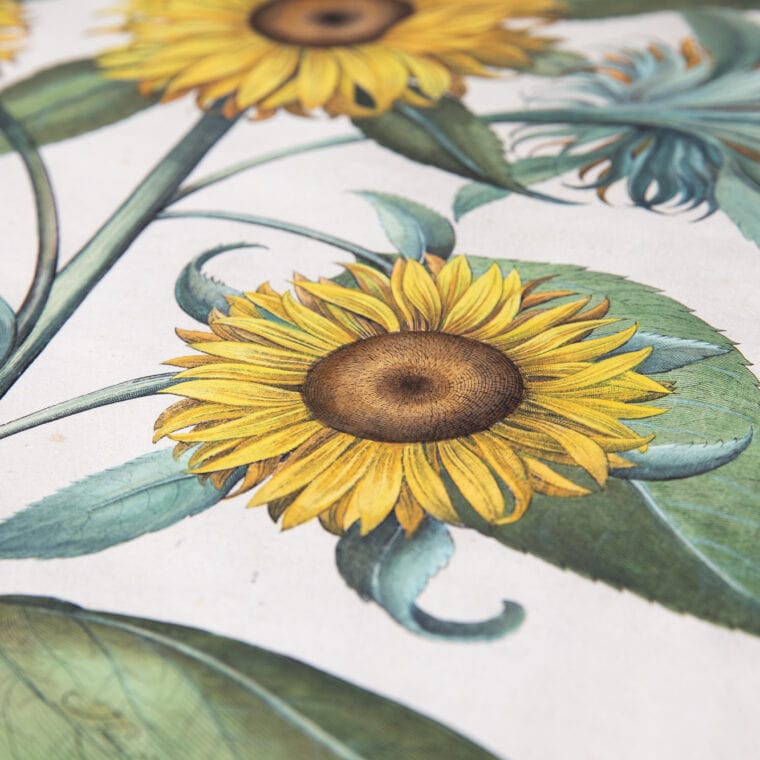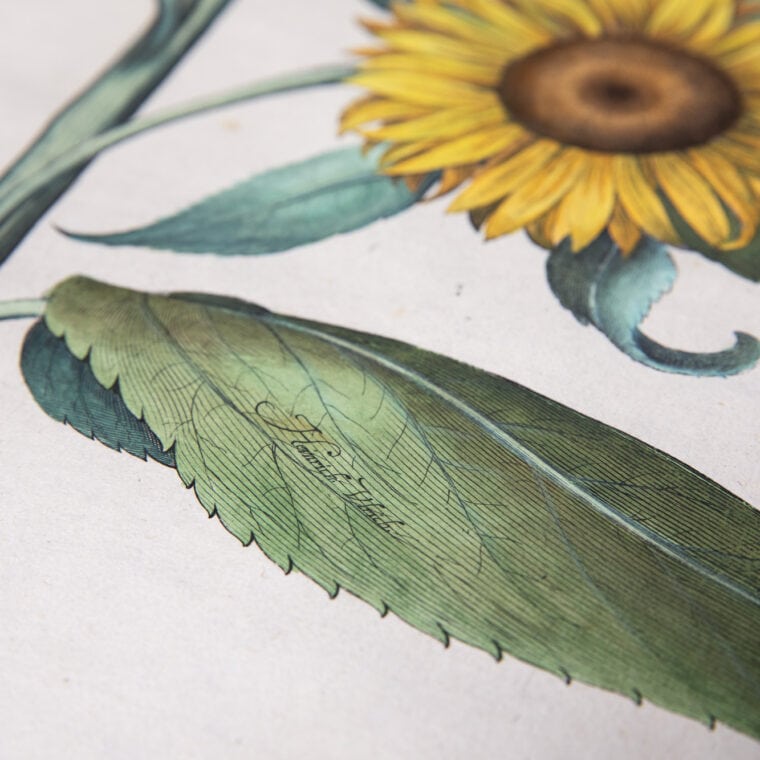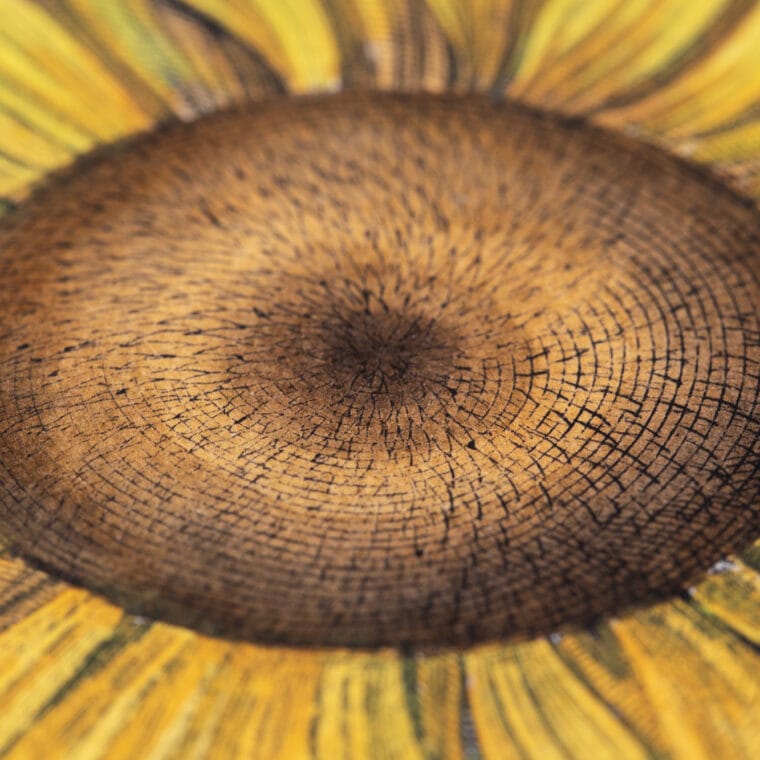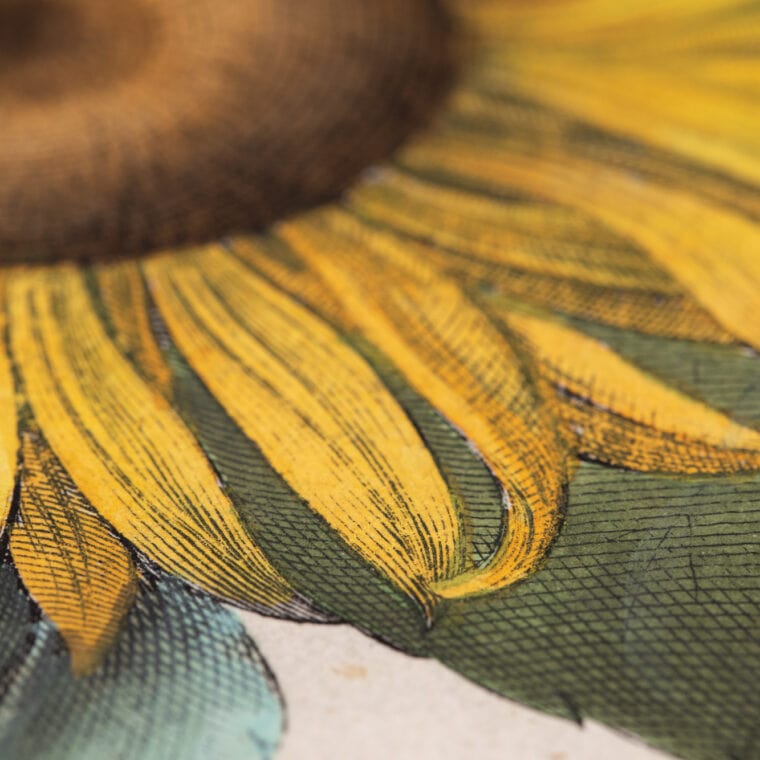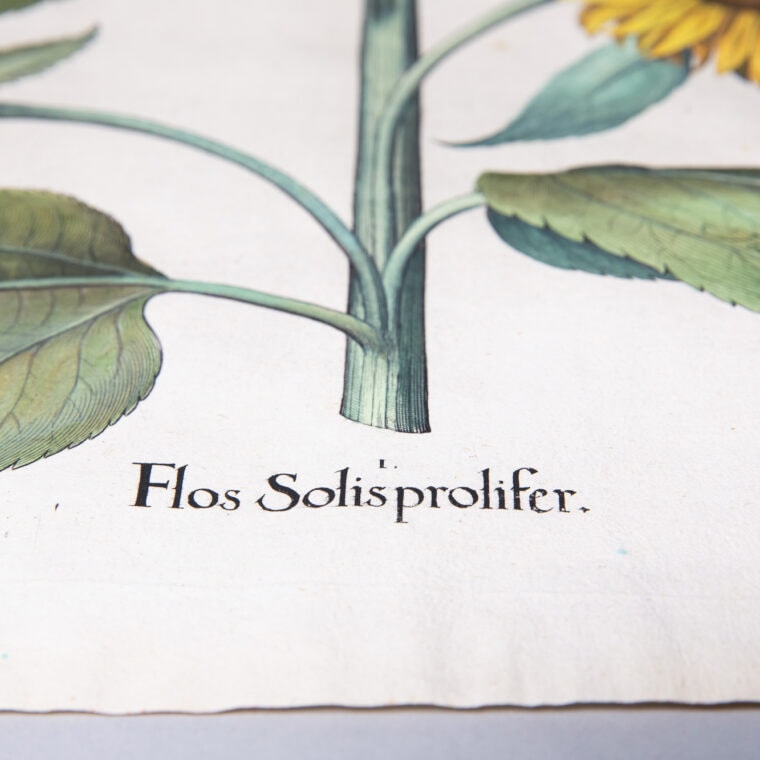1/7 Sunflower Botanical Print
This hand-colored copperplate engraving of a sunflower by Basilius Besler was published in his seminal work, Hortus Eystettensis, in 1613.
One of few crop species originating in North America, the name sunflower (Helianthus annus L.) comes from the Greek “helios” (sun) and “Anthos” (flower). Historically and today, sunflowers were grown for food, seeds, and oil. A sunflower head can produce up to 1,000 seeds!
Sunflower Botanical Print
Click on the video to see the exquisite details of the sunflower botanical print.
Next: 2 A Book with Overlays
Born into an affluent society in England in 1752, Humphry Repton tried several occupations with little success until he changed his course in 1788 and decided to make his living as a professional landscape designer.

